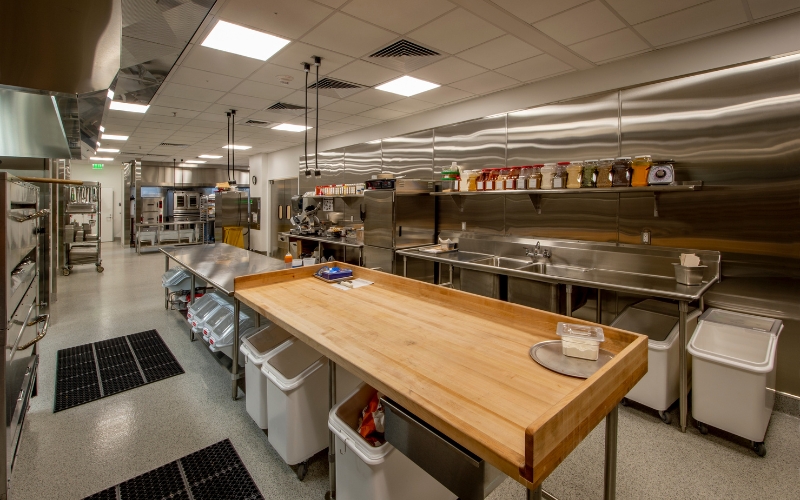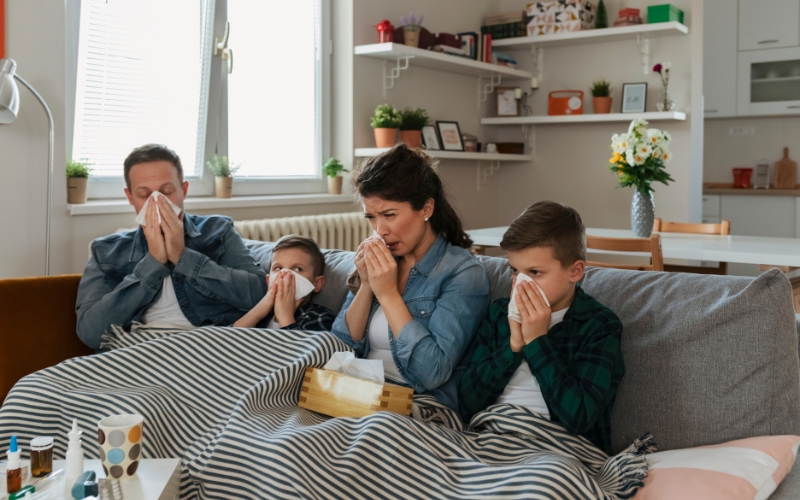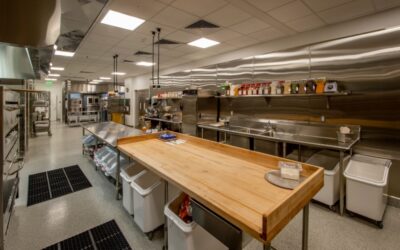Adherence to rigorous food safety regulations is non-negotiable when managing a food processing or storage facility. Yet, even with meticulous sanitation practices, one crucial factor often overlooked is indoor air quality (IAQ). Poor IAQ doesn’t just affect worker comfort—it actively undermines food safety compliance, risking contamination, recalls, and damage to your brand’s reputation. Here’s how poor IAQ threatens your operation and how advanced technologies offer potential solutions.
How Poor IAQ Affects Food Safety
Airborne contaminants such as bacteria, viruses, mold spores, and volatile organic compounds (VOCs) thrive in environments with poor indoor air quality. These airborne pathogens can easily settle on food surfaces, packaging, and equipment, significantly increasing the risk of contamination.
For example, mold spores circulating through air-handling systems can contaminate stored goods, leading to spoilage and extensive product losses. Likewise, harmful bacteria such as Salmonella and Listeria can travel through the air, quickly spreading across production areas, endangering consumer safety, and triggering costly regulatory interventions.
Facilities experiencing poor IAQ often see a higher incidence of microbial growth due to improper humidity and temperature management. High humidity, in particular, fosters mold and bacteria growth, creating an ideal breeding ground for pathogens and allergens that directly violate strict food safety standards.
Regulatory Impact and Risks
Food regulatory agencies, such as the FDA and USDA, enforce stringent IAQ standards. Non-compliance can result in heavy fines, costly shutdowns, and extensive product recalls. Additionally, poor IAQ documentation can negatively affect audit outcomes, placing certifications and business contracts at risk. Facilities that neglect air quality management face increased scrutiny, potentially damaging their reputation and consumer trust.
Addressing IAQ Challenges with Innovative Solutions
Addressing IAQ concerns requires a proactive approach. Innovative air purification technologies have emerged, offering promising solutions for controlling airborne contaminants and supporting compliance with food safety standards.
One such technology is Synexis’ patented Dry Hydrogen Peroxide (DHP®), which continuously generates molecules from ambient humidity and oxygen to reduce harmful microbes actively. This approach is chemical-free, requiring minimal maintenance compared to traditional air filtration and sanitation methods. Independent studies demonstrate its effectiveness in reducing bacteria, viruses, mold, and VOCs, providing facilities with greater control over indoor air quality.
Proven Results and Long-Term Benefits
Facilities employing advanced IAQ technologies have reported measurable improvements in microbial reduction, enhanced compliance during audits, and fewer operational disruptions. Implementing these technologies helps maintain optimal indoor air quality, ensuring compliance, improving overall safety, and fostering consumer confidence.
Ensuring Long-Term Compliance
Maintaining optimal indoor air quality isn’t a one-time event but an ongoing necessity. Technologies such as DHP provide continuous microbial control, supporting your facility’s long-term safety, compliance, and operational efficiency.
Don’t let poor IAQ undermine your food safety compliance. Explore innovative technologies to proactively manage your facility’s air quality and protect your operation’s integrity.
To speak with an IAQ expert from Synexis, fill out this form and we’ll be in touch as soon as possible.
And to learn more about Synexis, click here.







